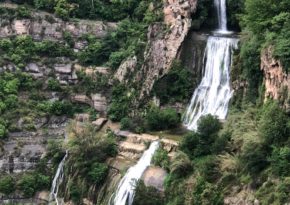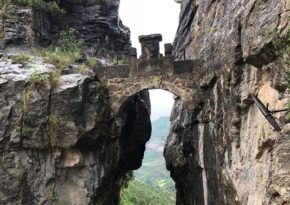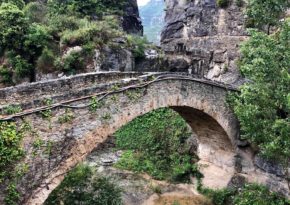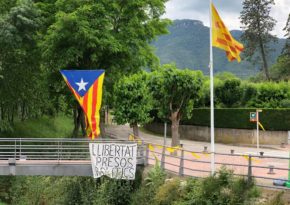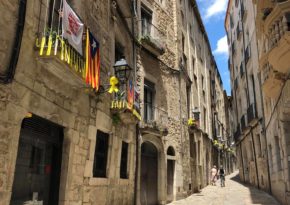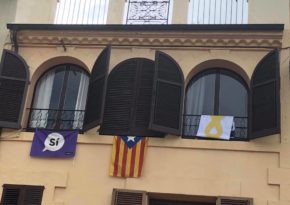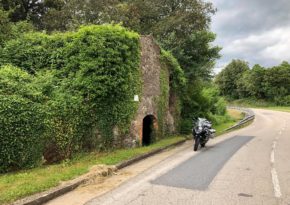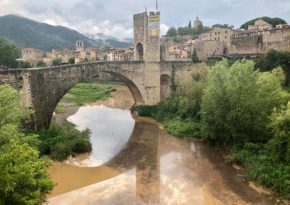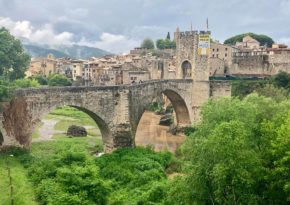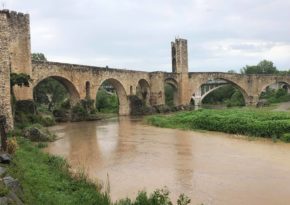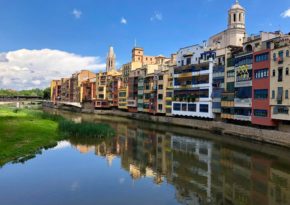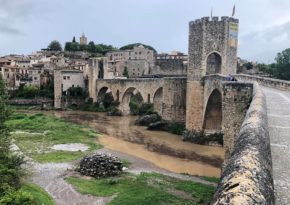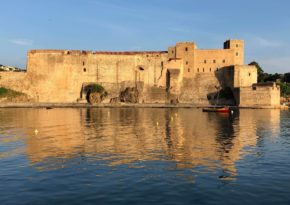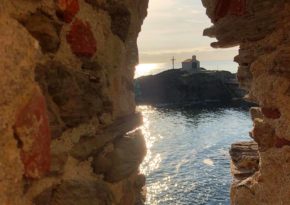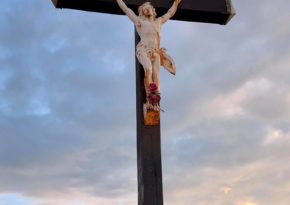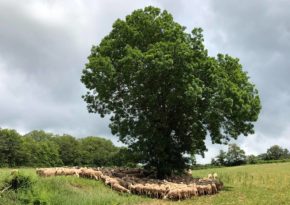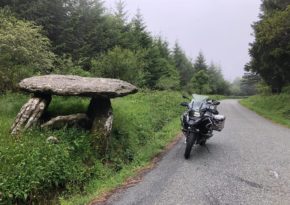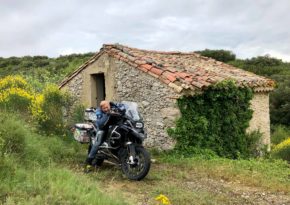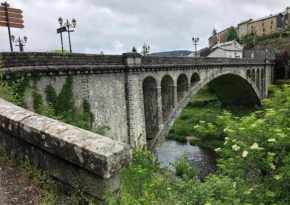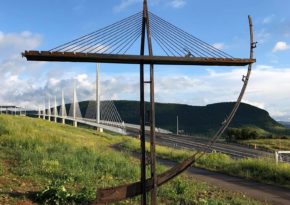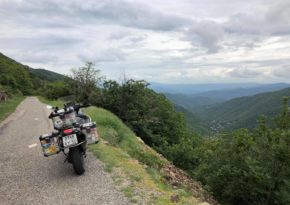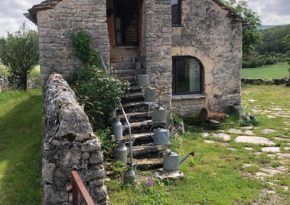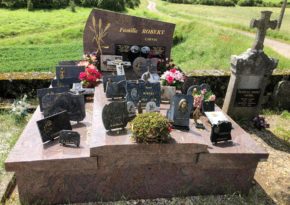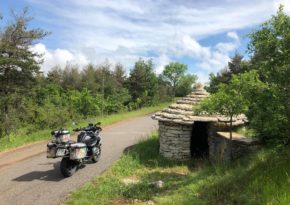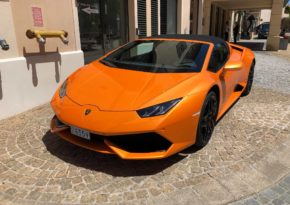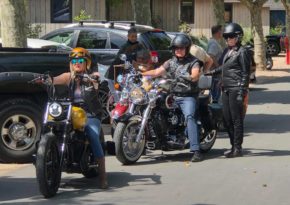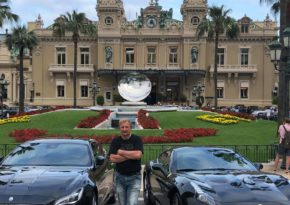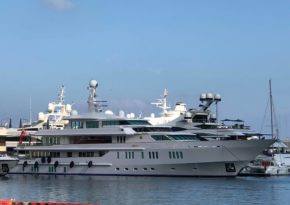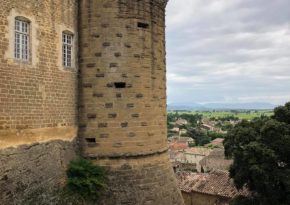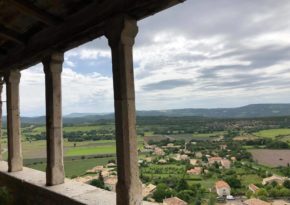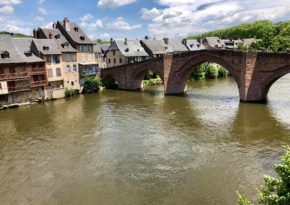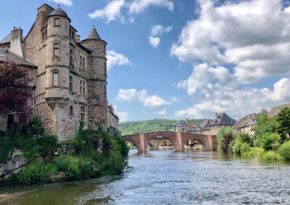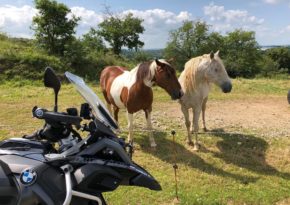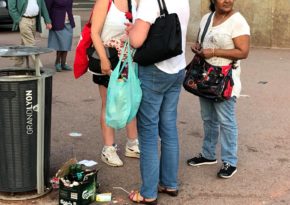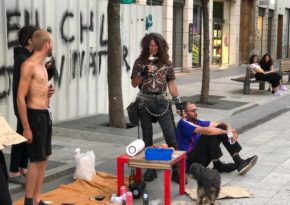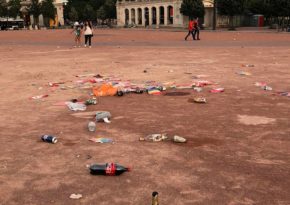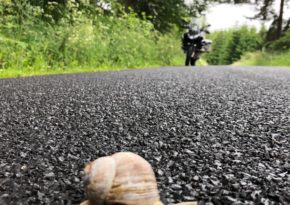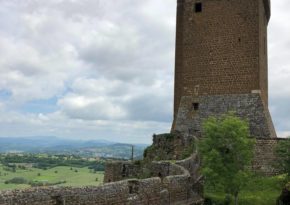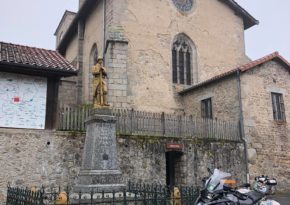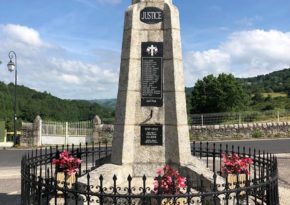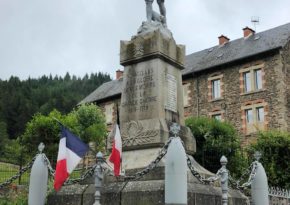3500 km across the south of France. A motorbike trip.
Catalonia greeted me in an unfriendly way. By noon the clouds approaching from the southwest had covered the whole sky and an unpleasant drizzle turned into a real downpour after lunch.
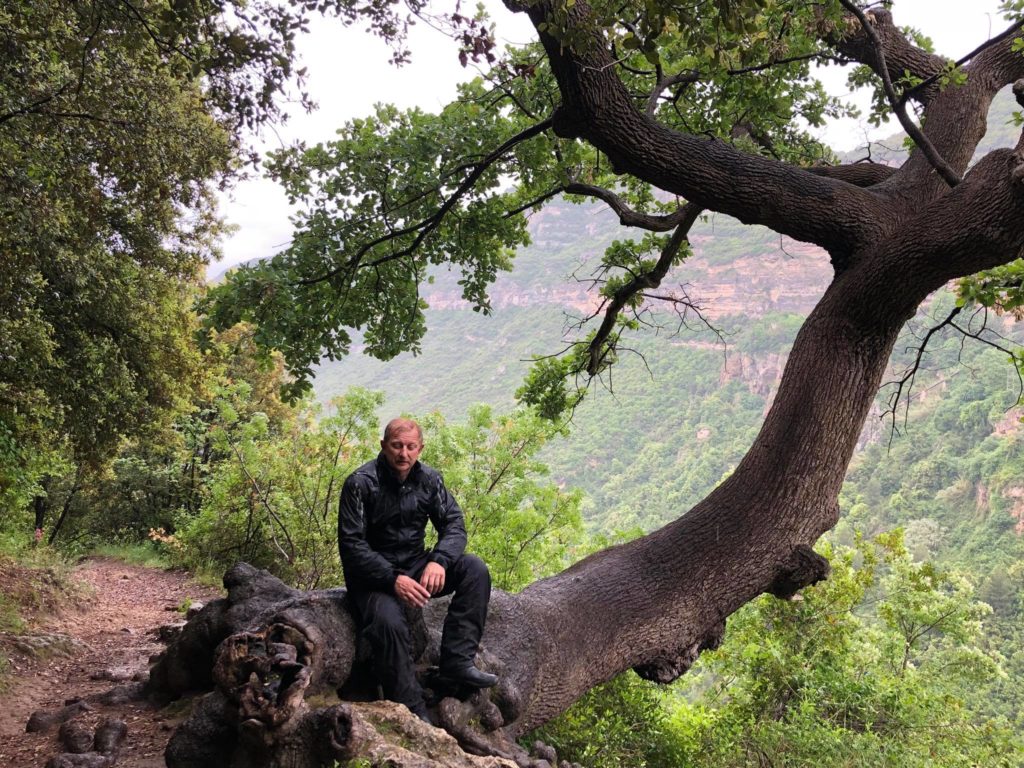
I passed another roundabout with wide plastic pedestrian crossing lanes. Suddenly the rear wheel slided on the wet markings, and a moment later my motorbike proceeded its movement forward lying on its side and rotating around its axis. Together with me. Okay, it has been a long time since I laid upon the asphaltlast! One car stopped two metres away and a driver got out of it and asked me something in Spanish. He must have offered help. "Thank you, no need. Muchas gracias", I answered, while getting out from under the motorbike. I threw the footboard back, lifted my "two-wheeled friend" and started it. In a couple of minutes I was already standing by the curb, examining the consequences of the "somersault" performed.

"Well, I was lucky to get off that easy", I was speaking to myself, while screwing the rearview mirror into its place. There were some cuffs on the protective arc, steering wheel and trunk left and I got a couple of bruises on my leg and on my glutes. But it's not a big deal.
I rode fifty kilometres along the seaboard enjoying the beautiful views of the rocky coast, coves, snow-white yachts and yellow sand beaches without a single tourist on them. Then the navigator led me to the mountains, where the ancient monastery of Sant Miquel del Fai is situated at the inaccessible rocks. That was the goal of my trip today. I followed the serpentine and stopped at a fork. The purple stripe on the navigator display suggested going to the left, but there was also a road to the right, an abandoned ground one with a rusty barrier tightly closed. It seemed not to have been open for ten years or more. But I'm going not by car! So I carefully went the barrier around and started climbing over wet stones, puddles and mud up to the pass. "I wish I had put the off-road tires on!", I thought, while catching the rear wheel sliding on slippery rocks and wet ground for another time. As always, the shortest way turned out to be the longest and the most interesting one. The beautiful views from the top and, of course, the adventure itself became my reward!
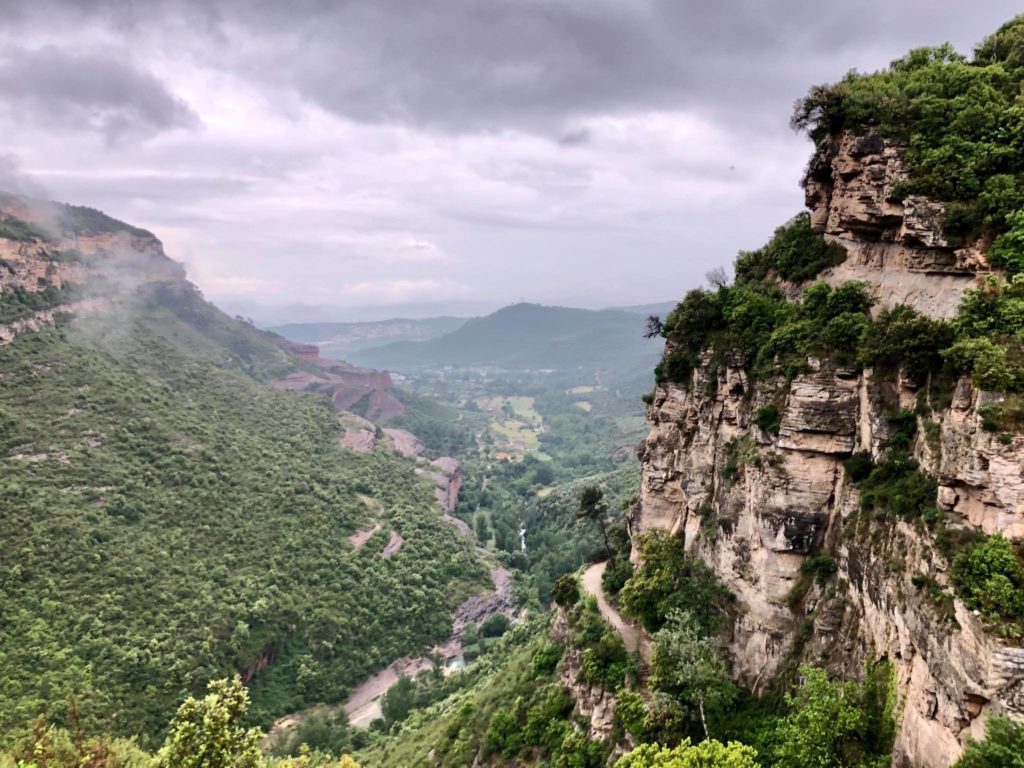
And the dirt was then washed away by rain as if I used some sort of "Kärcher" substance to clean up everything from the helmet to the boots.
P.S. I haven't get inside the monastery as it was closed for reconstruction. But never mind. :)
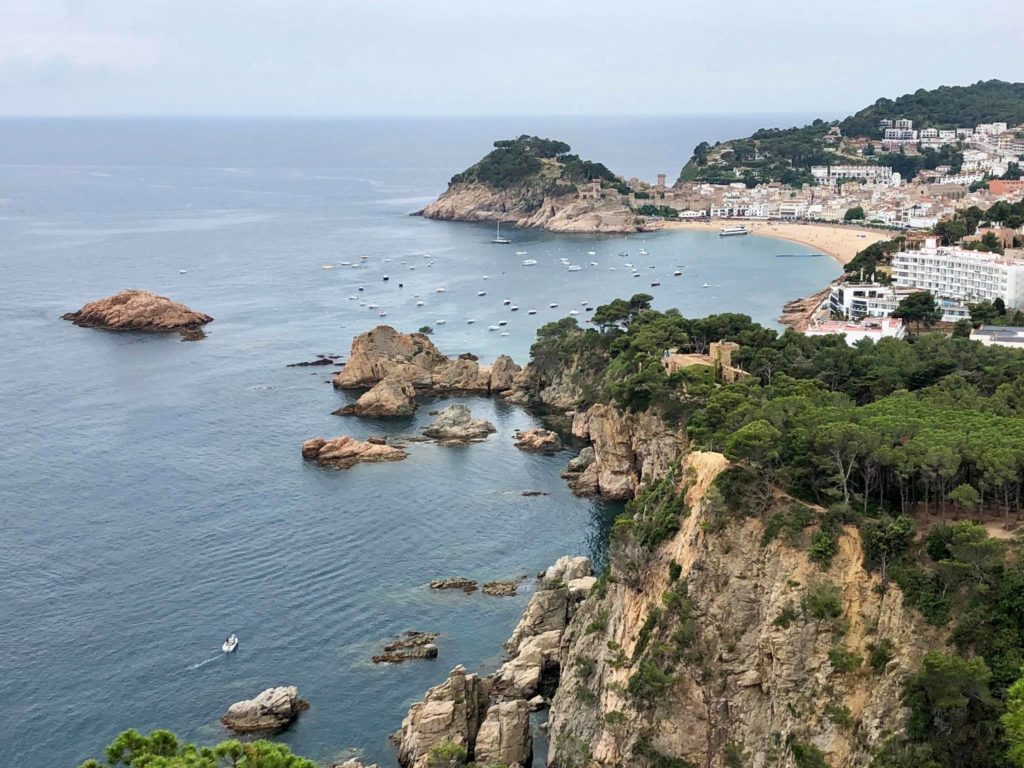
Do you know what immediately catches your eye when you enter any locality in Catalonia? It does not matter if you are in a small village or in a large city (for example, in Girona), there is one common detail everywhere: Catalan flags and yellow ribbons.
Every person who considers himself or herself a Catalan should have a striped flag on his or her balcony. The bigger the flag, the more patriotic the owner. Such supporters of independence have decorated almost every pole, fence, tree or downpipe with yellow ribbons… I saw a similar manifestation of patriotism only in Ukraine, when I was crossing it from west to east last year. So everything here is taken very seriously!
One more thing that distinguishes local towns is the tidiness of the streets. They are really clean, almost like in Japan. Or in Moscow! :)

In general, travelling in this northern province of Spain is a pleasure! Here you can see beautiful roads and well-groomed towns and villages. The service is excellent, the food is delicious, the prices are low and there are a huge number of attractions, mountains as well as the seaside. Just everything that a tourist needs to make their holiday unforgettable!
These are the amazing and beautiful works of architecture in different towns of Catalonia. The castles, churches, bridges and narrow cobbled streets have seen a lot for their long-term existence.
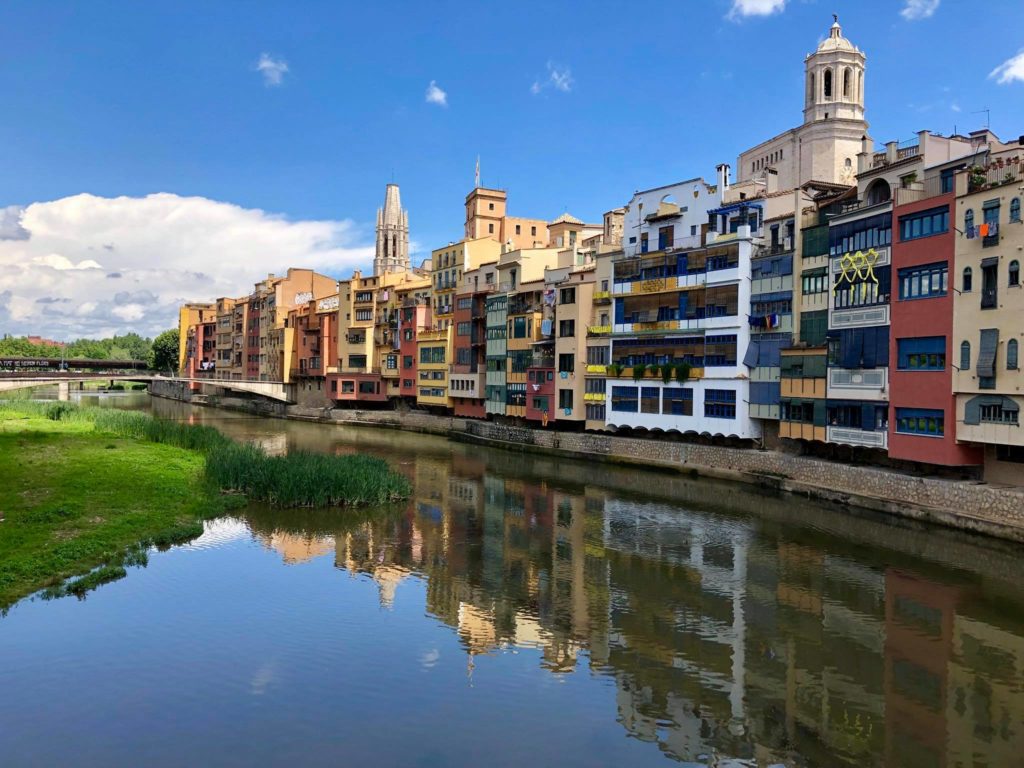
We arrived in Collioure, a small port town in the south of France, in the late evening, when the sun had already hidden behind the high and powerful walls of the inaccessible fortress.
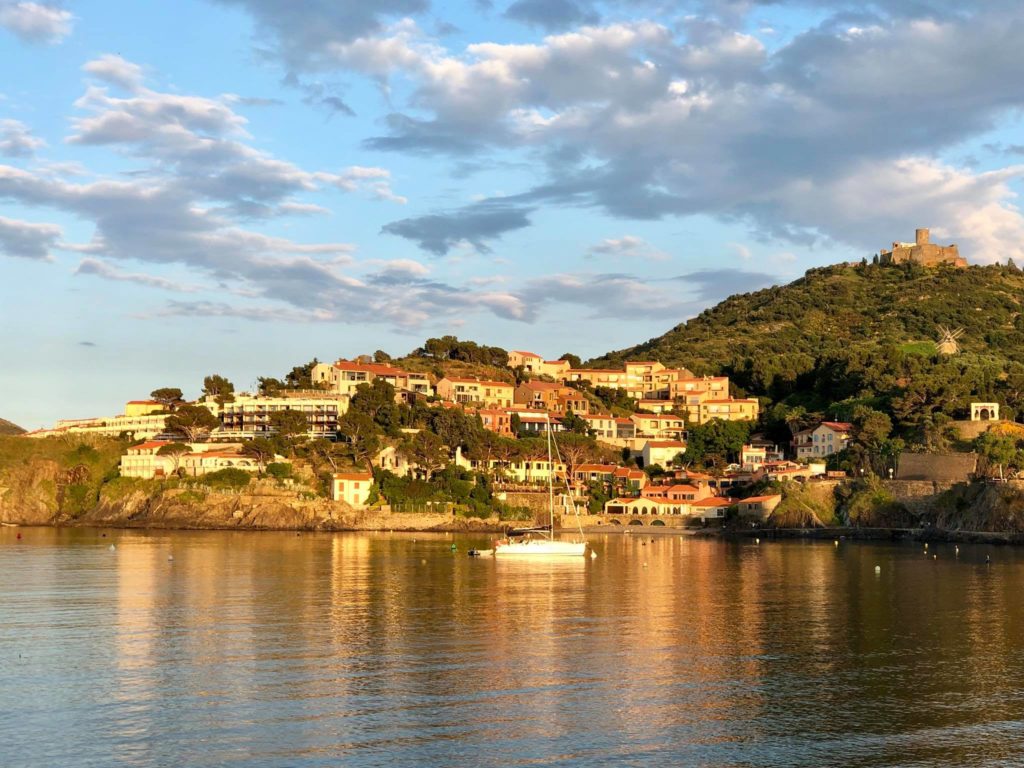
The first impression of Collioure comes as a postcard town, a landscape town and a fairy tale town! It is located in a quiet bay, surrounded by low mountains, on which the watchtowers stand like sentinels. The fortress walls, the chapel and the old lighthouse are reflected in the transparent surface of the water. Fishing boats rub their sides against the board of the pier. You see the embankment paved with stones and the bright colourful houses with tiled roofs. Along lmthe embankment there are numerous cafés and cozy restaurants, which offer you a glass of fine local wine with anchovies. On their walls you can spot the reproductions of paintings by Matisse and Picasso, who had been living and working here for a long period of time.
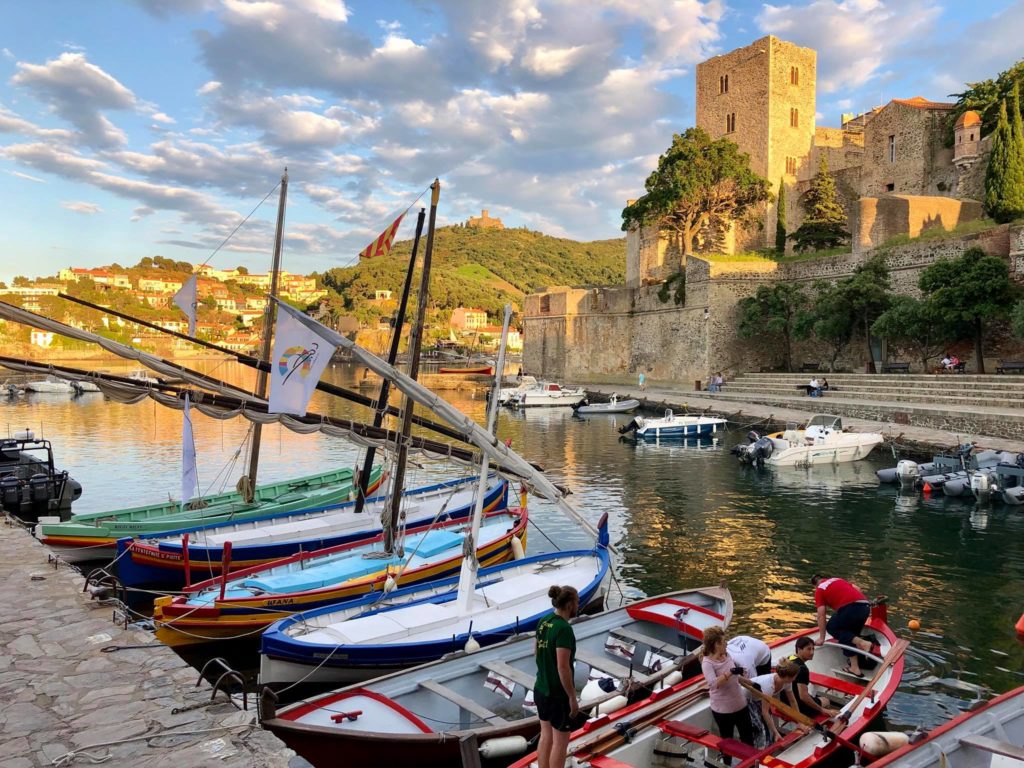
If I had such an opportunity, I would be glad to move to this cozy town and keep myself busy with writing memoirs and reflecting on my life. But I would do it about twenty-five years later. Not earlier than that.
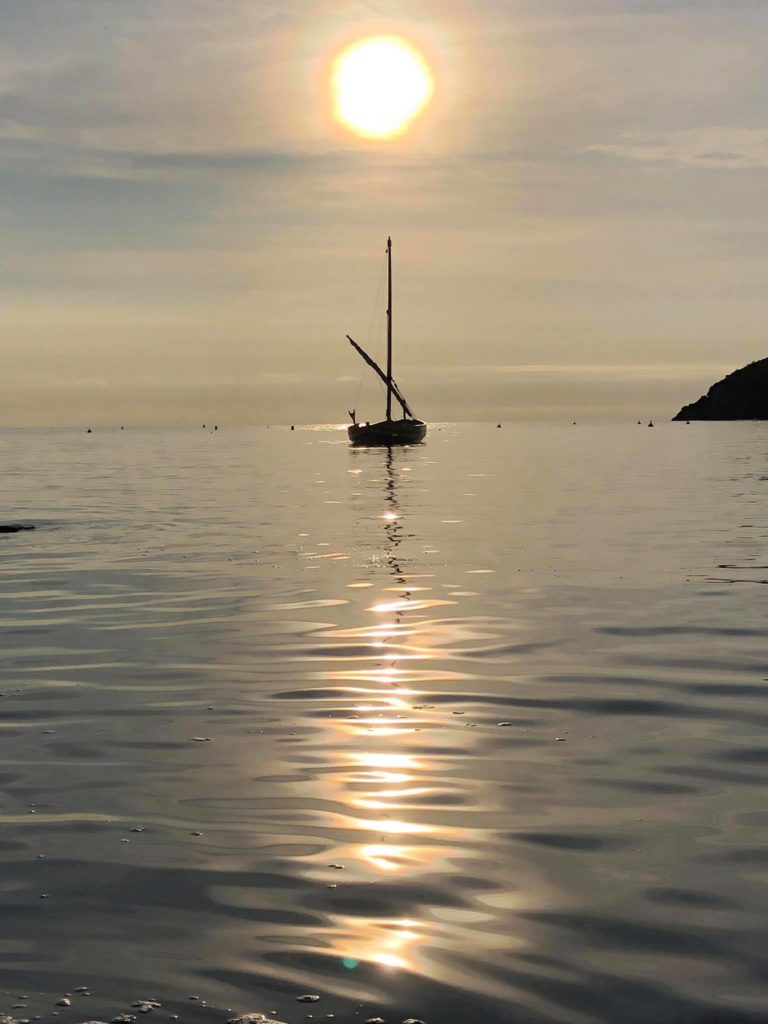
My motorbike trip across France is going on.
This morning I left the fortress town named Carcassonne and continued my journey across the southern province of the country with the beautiful name Languedoc-Roussillon. This least populated area is famous for its castles, wineries and numerous vineyards.
I kept climbing the mountains (the height of which is no more than 1000 m) along the narrow winding paths. These are the Southern Pyrenees. At the passes I got under heavy rain again and the temperature dropped to +15°C. Well, the beginning of summer in the south of France might make one feel sad! :(
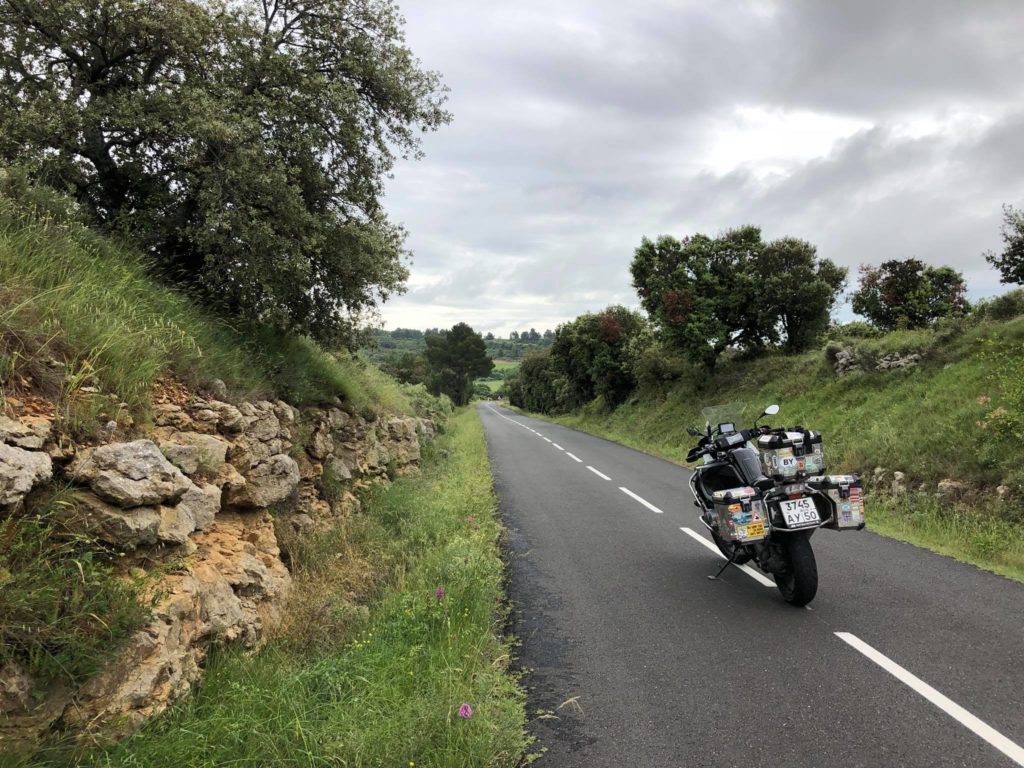
But the nature is gorgeous! I was riding through a dense, dark pine forest. Having taken another turn, I saw a roe deer twenty metres in front of me. At once it made a graceful leap and disappeared into the forest thicket. And what indescribable smells there are after the rain! I lifted my misted up visor in order to take a deep breath of the headwind, filled with the scents of flowers, wet pine trees, foliage and fog. That is a miracle!...
In the south of France near the town called Millau there is a unique structure. It is the highest cable-stayed bridge in Europe (or a viaduct, to be more precise), Viaduc de Millau.
It was built in 2004 and constructed as a cable-stayed structure on seven supports. The height of the highest of them equals 341 m and the diameter at its base is 24.5 m. In my opinion, Viaduc de Millau is a very interesting (from the architecturers' point of view) and just a beautiful bridge!

Mountain roads in the south of France are so narrow that a motorbike and a car could hardly pass it simultaneously. After raining the streams of water left some wet foliage, stones and dirt on the asphalt. The corners are mostly closed and very steep. Today I experienced the situation when a minibus suddenly appeared from behind a rock and blocked the entire roadway. Fortunately, we were able to pass each other, having left literally a centimeter between. That's why you can't go at a high speed here.
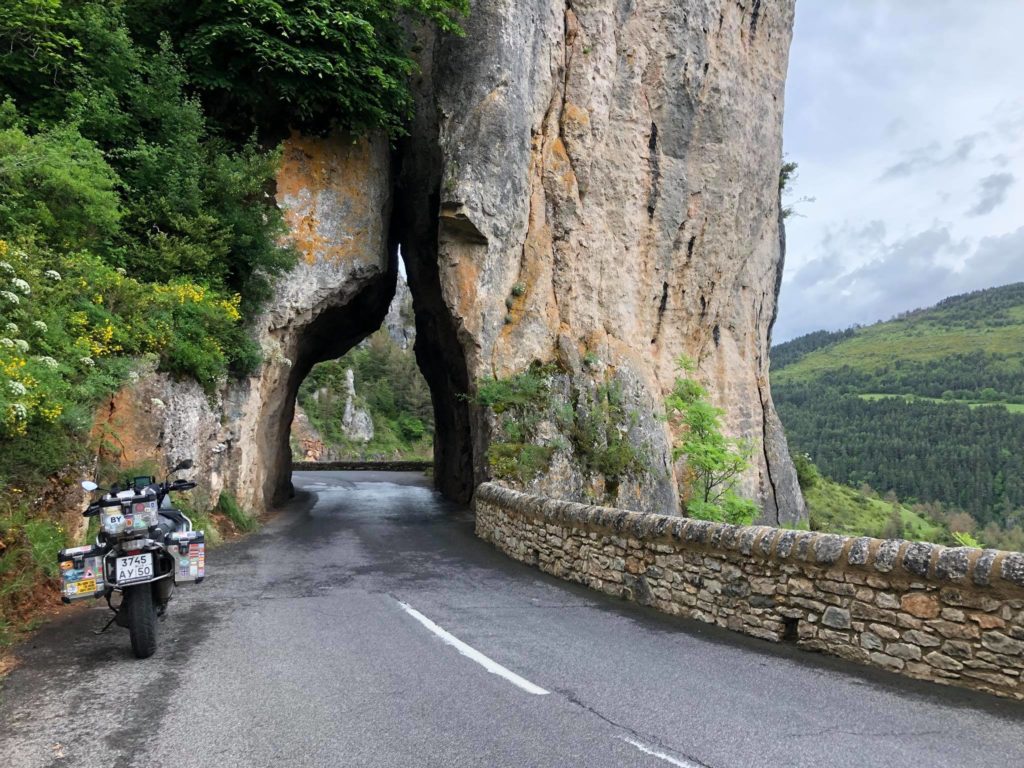
All day I had been riding along the peaks of the mountains and experienced about two hundred kilometres of serpentines, thousands of turns, ascents and descents, stepping on the gas and on the brake now and then, looking left and right. And when you take the second or third gear, you have to keep fully focused. But the views were absolutely gorgeous!
From time to time I came across lovely small villages and houses made of beige stone, many of which had been built hundreds of years before. I made a stop in one of these villages, which consisted of several houses, a church and a small graveyard fenced with a low stone fence.
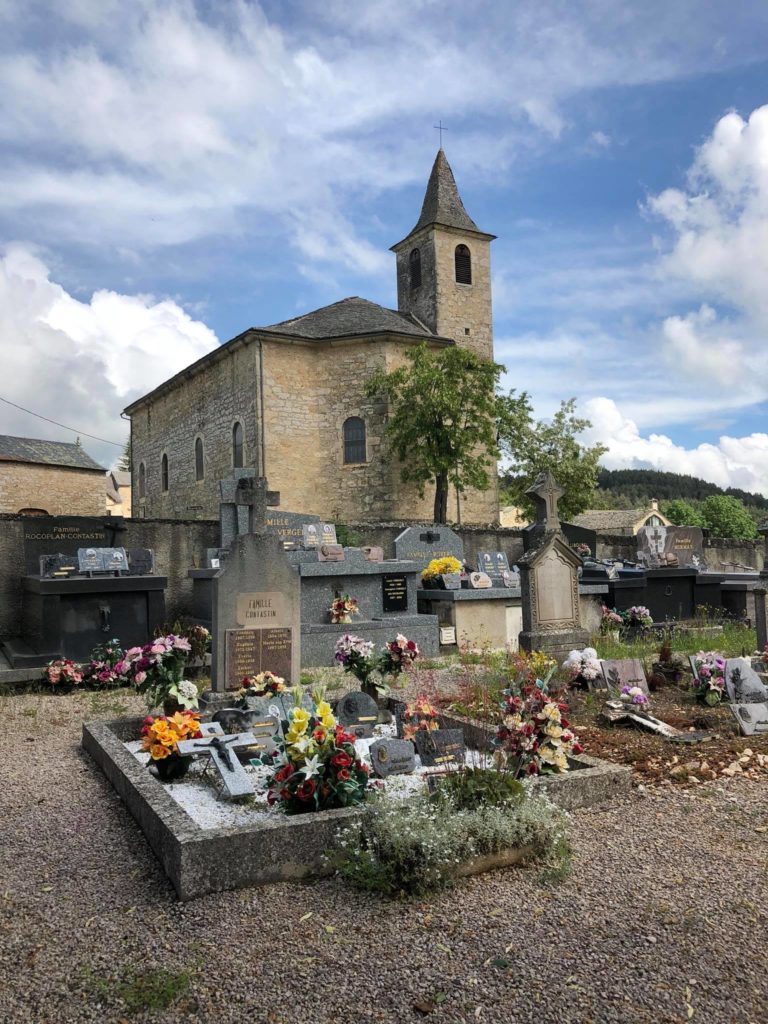
Having opened the wrought-iron gate, I walked along the gravel paths between the family crypts with dates and names on the plates. 1867 ... 1893 ... 1914. Everything was very tidy and well-maintained. I saw a particular monument to those who had died during the First World War. On this obelisk there were engraved about twenty surnames with dates of death from 1914 to 1918. Peace and quiet.
I followed my way, skirting the peaks, and on one of them I saw a windmill. Finally I found a ground road leading to this character of the famous novel by Miguel de Cervantes. It turned out to be a real windmill that still produces flour just like it did it five hundred years ago! Fantastic!
The glamorous capital of the Russian "elite" greeted me with warm and sunny weather. The Saint-Tropez village (that's how it is marked on the map) is as different from the provincial settlements of France as the Barvikha village differs from the rest of numerous villages of my vast homeland.
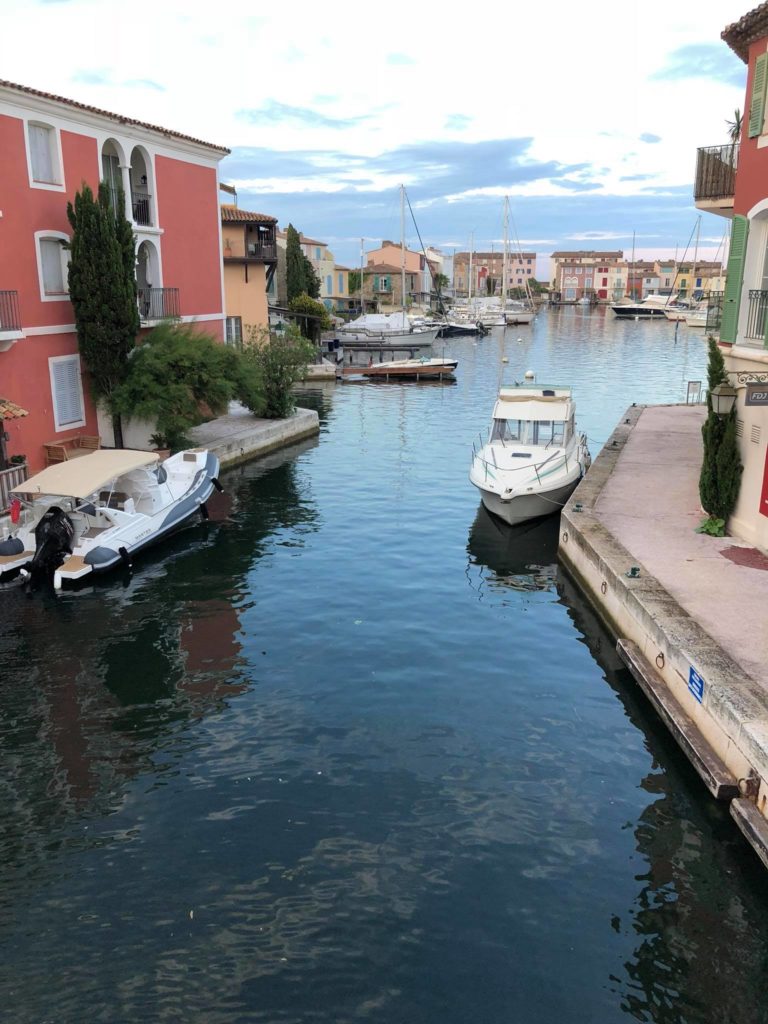
The Cote d'Azur has given shelter to many of russian former and present bureaucrats, bankers, oligarchs and other cheaters. Some of them were forced to live in grief far from their homeland, being unable to return. Others are torn between their mansion in Rublevka and apartments in Saint-Tropez or Monaco. Here you can find more castles, yachts, expensive cars and stuff like that than anywhere else.
Snow-white vessels rub their sides against the berths, being pickled like cucumbers in a three-litre jar. Maserati and Ferrari cannot pass each other in narrow village streets and Harley Davidson went in for an all-European sabbath.
Thousands of chrome-plated pieces of iron glitter in the sun and fill all the streets, alleys and lawns with clanking of their ram-flow silencers.
It is so dense that it is impossible to pass through, let alone drive! After lunch my friend and I went to Monaco, a tiny European state, which is located on the Mediterranean coast 120 km from Saint-Tropez.
The roads were gorgeous and the port was packed with huge yachts, some of which were slightly smaller than the Lenin icebreaker.

We took a ride along the Formula One track, on which a stage of the Monaco Grand Prix race had just ended. Then we went to the Monte Carlo Casino, which looked more like a palace than an entertainment venue from the outside.
We didn't play in it. We just had a cup of coffee and a cake for €50 in one of the cafés and went back.
Well, no, this vanity fair is definitely not for me.
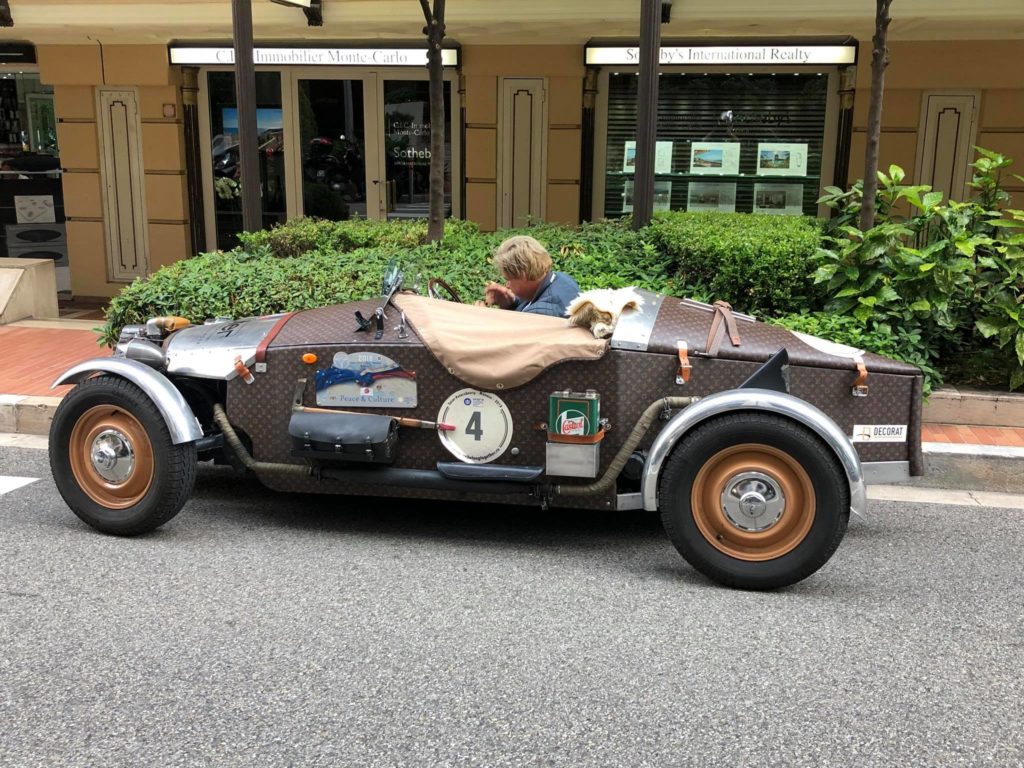
The Cote d'Azur → Provence → Languedoc. Now we continue our motorbike trip across the southern provinces of France. The weather does not welcome us, since we are getting into the rain every day and it's quite cool. But this fact does not affect neither our mood nor our pleasure from what we see, feel and inhale!
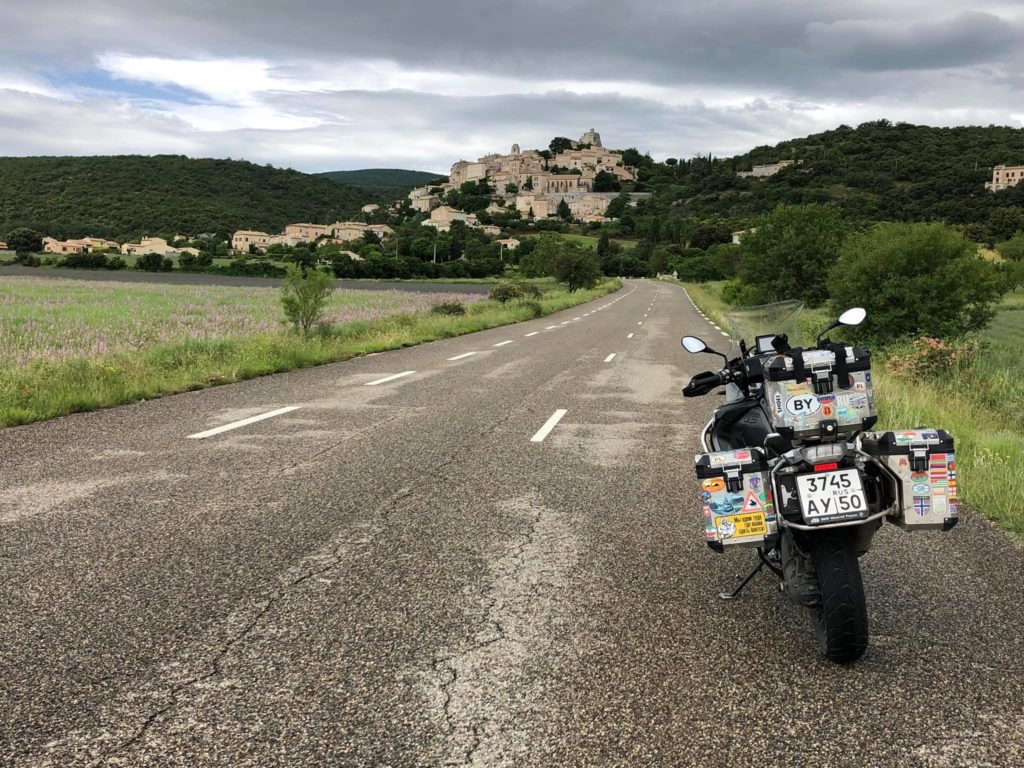
And there are a lot of attractions worth seeing! You can enjoy beautiful roads; numerous castles; wineries surrounded by vineyards; lavender fields; mountain rivers and lakes with the purest azure water; small villages with large stone temples and bell towers constructed in Gothic style.
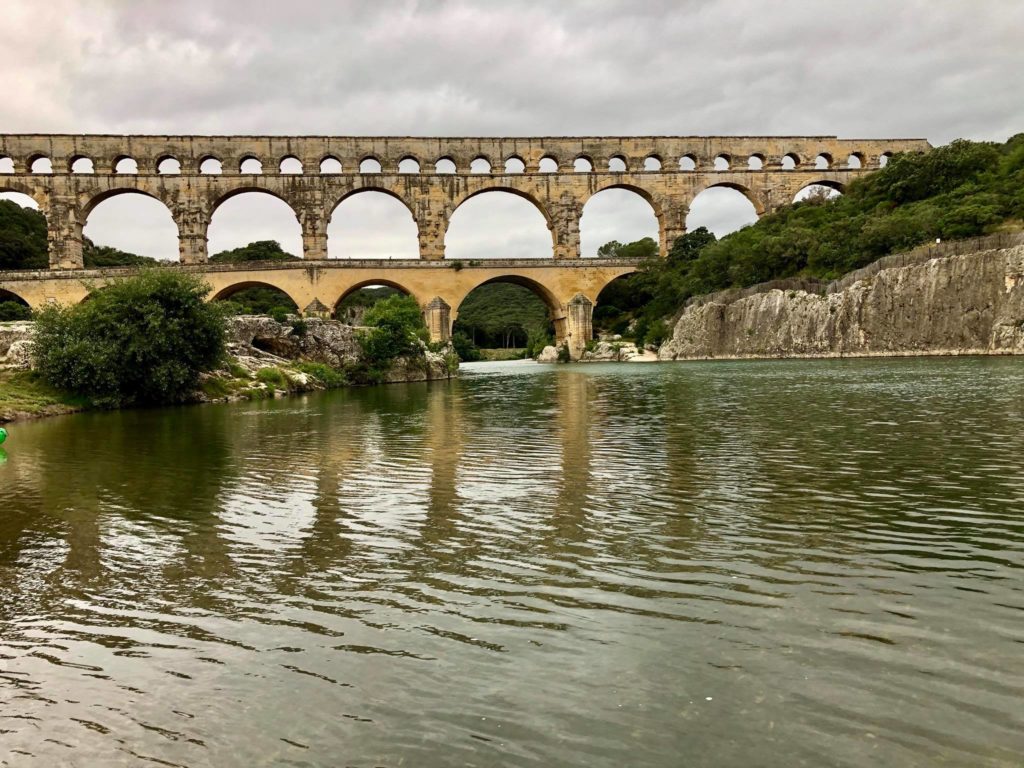
In comparison with the large cities that are gradually losing their inherent charm and French spirit, in the provinces everything still remains unchanged. On their quiet narrow streets, where the grapevine winds along the stone walls of old houses, covering the wrought-iron railings of the tiny balconies, you would hardly meet women in hijabs and black sellers would hardly bother you with their intrusive offers to buy some chinese stuff. In addition, all the streets are perfectly tidy!

Today we got to a unique place with an interesting name Pont du Gard. This is the highest remaining Roman aqueduct, which was built exactly two thousand years ago. The grandiose structure (48 m high and 275 m long) surely impresses with its splendour and architectural perfection! How could such a thing have been built at the beginning of our era without any use of cranes, cars and modern equipment? It is just a mystery to me.

This year the beginning of summer in the south of France is abnormally cold and rainy. We are going inland along the southern slopes of the Pyrenees and the air temperature hesitates from +10 to +20°C, depending on the altitude. A heavy downpour lasted all day yesterday. The roads are good, but narrow and there are frequent sections sprinkled with gravel. Today I had to insure my motorbike a couple of times at the turns, so there's no chance to accelerate much.
The current courses of the day are short: from 200 to 300 km. Nevertheless, overcoming longer distances doesn't make any sense in mountain travelling, as you also should see how people live there.
And according to what I saw, they live quite well!

Lyon, the third biggest city in France, greeted us with traffic jams, dirty streets crowded by motley public, a pride parade and the central Bellecour square with a majestic statue of Louis XlV on horseback in it.

"The King of France" was sitting proudly on his horse right in the middle of mountains of garbage, empty bottles and plastic bags. Having walked along the embankment of the Rhône river, we made a stop in a small square with a beautiful fountain. A young Arab guy was passing by with a bottle of beer in his hand and kicked a temporary road sign, which then fell onto the pavement with a crash.

There were a lot of people of different nationalities, looks and styles in clothes.

Having travelled three and a half thousand kilometres in two weeks across the southern provinces of the country and visited dozens of small towns and, at least, a hundred small settlements and villages, I can say that I have discovered the real France.
The provincial one. I have experienced that part of France with its perfect roads and clean (as if licked) narrow streets, which are paved with cobblestones. The one, where in the main tiny square of each small town there is a beautiful temple with a bell tower and a clock. There must be a neat and small fountain nearby as well. You can also admire flower beds and benches under the spreading crowns of century-old trees everywhere. Or visit a couple of small restaurants/cafés in the same square.
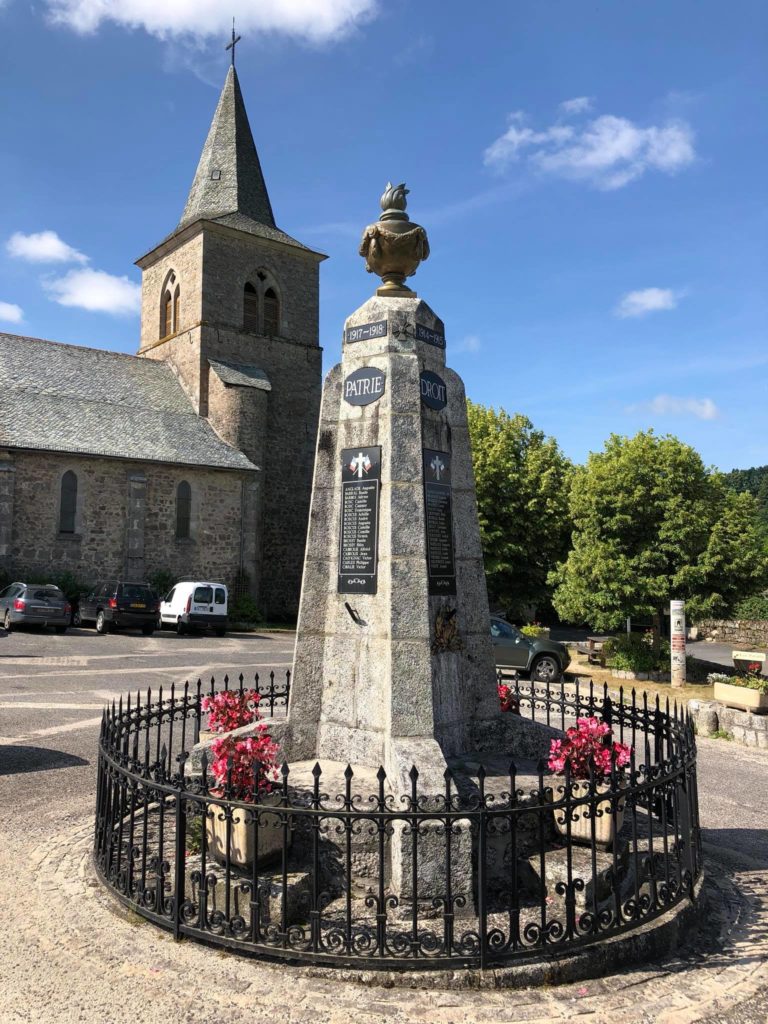
This is a stone arch bridge over a narrow but rather fast river.
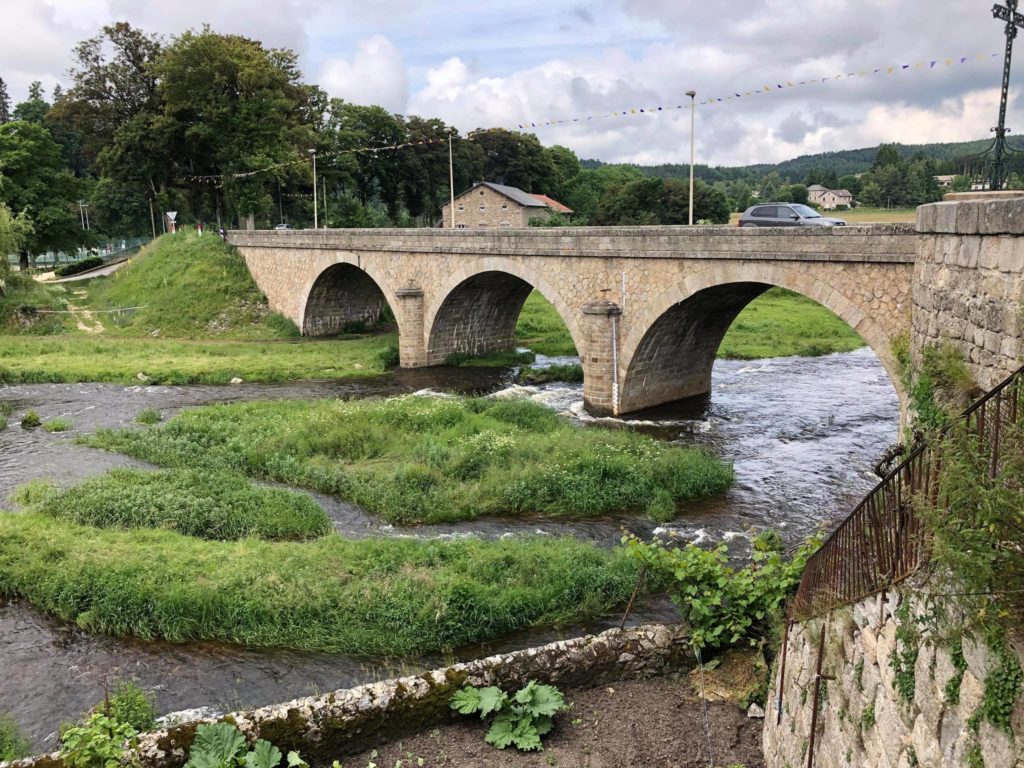
The houses are one- or two-storeyed, have tiled roofs and stone walls. Most of them were built in the century before last or even earlier. There are very few people in the streets during the day, because, apparently, everyone is at work. When going from one settlement to another, you may often meet small herds of cows chewing juicy grass. Some horses, sheep and goats grazing on the slopes of the mountains and tractors stirring freshly mown hay (the smell of which followed me all trip long) make up an ordinary rural landscape.

People in the province are simple and sympathetic. Although they don't speak any language except for French, it had no negative effect on our communication and mutual understanding. A smile and a desire to understand each other are the two factors that remove the language barrier. Actually, it works this way in any country.
When I was riding solo, I was always choosing the most remote places and villages for my exploration. Many times a narrow road was turning into two ground tracks and ending with some kind of a barn for cows. At such moments I was shutting my motorbike down and watching the animals for several minutes, inhaling the almost forgotten smells of grass, flowers and manure.
There exists a saying: "Paris (Lyon, Marseille… as well) is France, but France is not Paris!"
And I absolutely agree with this statement!

This report is being done at... the graveyard.
In my opinion, the memory about the departed ancestors and the attitude to one's history (both of the nation and of the family) characterizes any society in a very expressive way. I have always been ashamed to look at the graves of deceased Soviet soldiers. A typical picture is a rusty metal pyramid with a crooked red star on the top, located somewhere on the outskirts of the village behind a low wooden fence. This pyramid has been painted with another layer of oil paint in honour of the 9th of May. And how are the millions of those who died in the First World War memorised? Have you ever seen a monument to the heroes of that war anywhere? It is no use my mentioning the Russian Civil War…
During this trip I visited some local graveyards several times, because they are usually located near the temple or on the outskirts of the village. As a rule, there is a small stone fence around and the iron gates are always open. Then you see the rows of tombstones and family crypts made of stone and granite. On some of them there are dates of the late 18th and early 19th century marked. Everything is really clean and tidy. Actually, there are neither fences around the graves themselves, nor dried flowers or wreaths. You see only neat small plates on the granite slabs, which is a sign of the relatives' memory. It's just peace and quiet around here.
Almost every village has an obelisk with the names of those who died in the First World War (the number of them usually equals several dozens). And in this one there also carved three or five names of the soldiers who died in 1939-1945.
 Cap-travel.ru
Cap-travel.ru